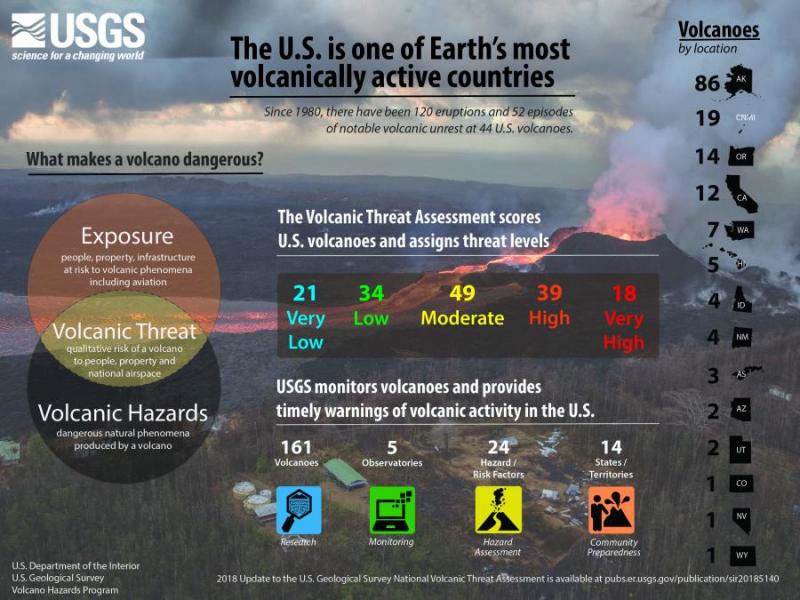
When erupting, all volcanoes pose a degree of risk to people and infrastructure, however, the risks are not equivalent from one volcano to another because of differences in eruptive style and geographic location. Assessing the relative threats posed by U.S. volcanoes identifies which volcanoes warrant the greatest risk-mitigation efforts by the USGS and its partners. This update of the volcano threat assessment of Ewert and others (2005) considers new research in order to determine which volcanic systems should be added or removed from the list of potentially active volcanoes, updates the scoring of active volcanoes, and updates the 24-factor hazard and exposure matrix used to create the threat ranking. The full report is available at https://pubs.er.usgs.gov/publication/sir20185140 .
USGSPlease reference USGS when publishing public images.
Full Resolution.